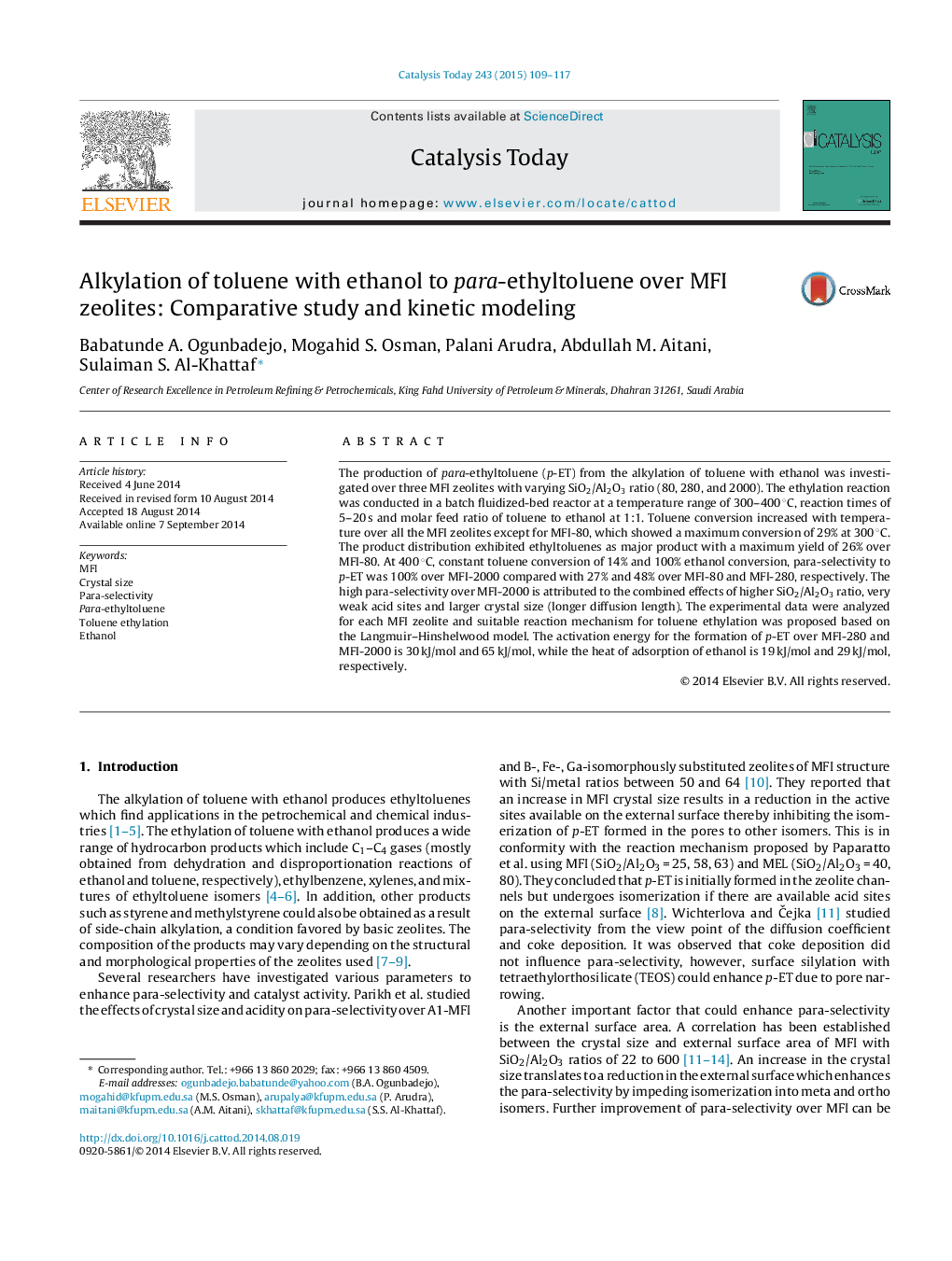| Article ID | Journal | Published Year | Pages | File Type |
|---|---|---|---|---|
| 54363 | Catalysis Today | 2015 | 9 Pages |
•An increase in MFI crystal size suppressed isomerization and yielded a para-selective ethylation catalyst.•Si/Al ratio, concentration of acid sites, and activation energy show a linear relationship for toluene ethylation.•MFI with Si/Al = 2000 gave 100% para-selectivity without need for surface modification.•A kinetic model with both ethanol and ethyltoluene adsorbing fits toluene ethylation.
The production of para-ethyltoluene (p-ET) from the alkylation of toluene with ethanol was investigated over three MFI zeolites with varying SiO2/Al2O3 ratio (80, 280, and 2000). The ethylation reaction was conducted in a batch fluidized-bed reactor at a temperature range of 300–400 °C, reaction times of 5–20 s and molar feed ratio of toluene to ethanol at 1:1. Toluene conversion increased with temperature over all the MFI zeolites except for MFI-80, which showed a maximum conversion of 29% at 300 °C. The product distribution exhibited ethyltoluenes as major product with a maximum yield of 26% over MFI-80. At 400 °C, constant toluene conversion of 14% and 100% ethanol conversion, para-selectivity to p-ET was 100% over MFI-2000 compared with 27% and 48% over MFI-80 and MFI-280, respectively. The high para-selectivity over MFI-2000 is attributed to the combined effects of higher SiO2/Al2O3 ratio, very weak acid sites and larger crystal size (longer diffusion length). The experimental data were analyzed for each MFI zeolite and suitable reaction mechanism for toluene ethylation was proposed based on the Langmuir–Hinshelwood model. The activation energy for the formation of p-ET over MFI-280 and MFI-2000 is 30 kJ/mol and 65 kJ/mol, while the heat of adsorption of ethanol is 19 kJ/mol and 29 kJ/mol, respectively.
Graphical abstractFigure optionsDownload full-size imageDownload high-quality image (73 K)Download as PowerPoint slide
